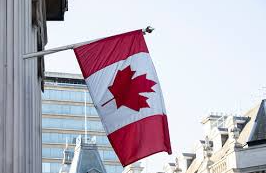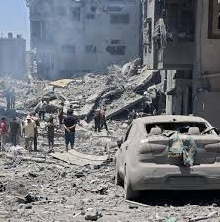
Ukrainians Doubt the Sustainability of a Ceasefire Amid Uncertain Futures
In the southern Ukrainian village of Malokaterynivka, Oleksandr Bezhan stands next to a vacant, icy field where he once worked as a fisherman. “If I wake up in the morning, that’s already pretty good,” he says, his voice marked by the uncertainty of living near the front line in the Zaporizhzhia region. The war has taken a toll on everyone here, leaving many, like Oleksandr, questioning what comes next for their land.
Malokaterynivka, just 15 km from Russian-held territory, hopes that US President Donald Trump’s potential intervention could shift the balance, placing it in a safer position. When I visited the region in 2023, Ukrainians were still holding on to the hope of victory. The counter-offensive launched by Ukraine had sparked optimism after the success of liberating Kyiv and recapturing territory. Yet 18 months later, artillery echoes across the landscape, highlighting the stagnation of Ukraine’s offensive and Russia’s continued dominance in the region.
The destruction of the Kakhovka dam has further altered the terrain, turning what was once a riverbed into a barren wasteland, reflecting the broader feeling of suspended fate. “If the front line becomes a border, it would be scary,” Oleksandr admits. The once-flowing river now stands as a stark division, separating Ukraine from Russian forces. The Zaporizhzhia nuclear power plant, under Russian control since 2022, glints in the distance, its presence serving as a reminder of the stakes.
Although both Ukraine and the US desire peace, the path to achieving it is fraught with differing visions. While Washington’s peace plans might result in Russia holding onto Ukrainian territory, Kyiv insists on the need for security guarantees to prevent further advances across its land. Trump’s stance, particularly his opposition to Ukraine’s NATO ambitions, has left many Ukrainians feeling isolated and betrayed by their most powerful ally.
The emotional weight of this situation is evident in the village. Natalya, who recently buried her husband, a local soldier, at a rushed funeral, expresses a grim sense of resignation. “I don’t have hope for a ceasefire,” she says, though she hopes to be proven wrong. Artillery fire punctuates the ceremony, forcing mourners to duck for cover as gun salutes are fired.
Despite the hardships, there is still hope among villagers like Lyudmyla Volyk, who has lived in Malokaterynivka her entire life. She fondly recalls when trains ran to Crimea, now under Russian occupation for over a decade. “We hope that one day it will be restored,” she says, optimistically looking toward the future. However, after 11 years of occupation, the return of Crimea seems increasingly distant.
Ukrainians, particularly in rural areas like Malokaterynivka, are caught between despair and cautious hope. As long as the war continues, the idea of peace is a beacon of possibility. However, for many, especially those who have lost loved ones and livelihoods, any proposed peace deal must offer more than just an end to fighting—it must ensure lasting security and the protection of their homeland.
President Zelensky remains firm, stating that any peace agreement must include Ukraine’s interests. Yet, the lack of clarity about what a ceasefire would look like—who would enforce it, and how it would hold—leaves many Ukrainians sceptical about the promises of peace.
If Trump does succeed in ending the war, the relief would be felt, but Ukrainians are aware that peace, if it comes, will bring its own set of unresolved challenges—especially as Russia, too, eyes the potential benefits of a new deal. The question remains: would peace truly be peace, or merely another uncertain pause in a long and bloody conflict?










